Mardin in the Land between the Rivers
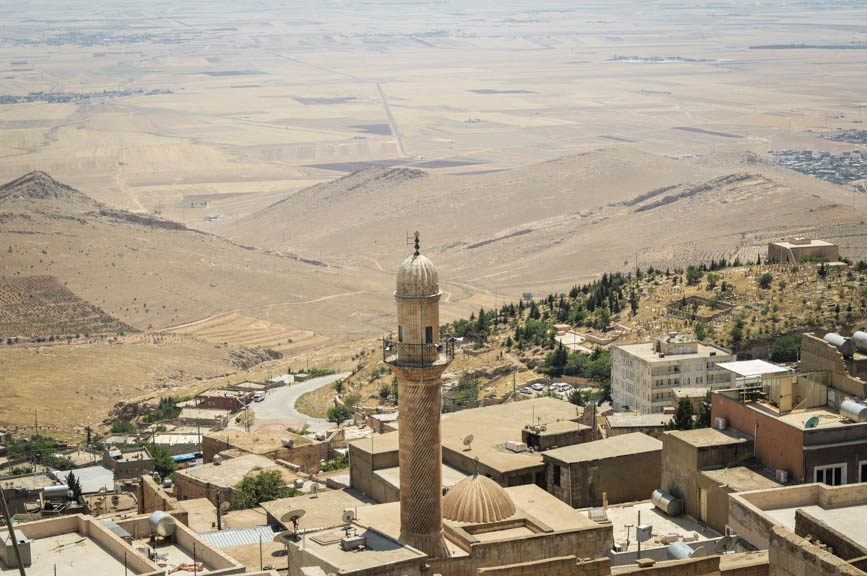
“Mesopotamia, comes from the ancient Greek⎜Μεσοποταμία⎜meaning “the land between rivers” -Tigris and Euphrates. It cradles most of modern-day Iraq, Kuwait, Northeastern Syria and Southeastern Turkey.”
The landscape dries up as we head further south and further east along Turkey’s edge. The wind sucks out every moist drop as dust particles swirl and rise in the afternoon yellow. We are on our way to Mardin, a historical town that Turkey’s government has targeted for further tourism development. The aim? 5 million domestic tourists per year. As we proceed eastwards, signs of poverty increase and the town of Kızıltepe right before Mardin seems to reaffirm that, run down, unfinished yet inhabited buildings, imitating a border town and reminding me of Shkodra in Albania. Where would all these tourists go? Within 1km, the answer is revealed. A shiny new airport dazzles gloriously on the roadside, it’s duty free shops and proudly plastic shopping mall taunting the dust and cement of Kızıltepe. If you are planning a trip to south-eastern Turkey, everyone waxes lyrical about Mardin, a must-see, yet the huge Hilton Hotel bolted to the edge of the cliff welcoming you to this city lost in time does nothing to calm the skepticism slowly rising in my blood. Is this going to be a tourist trap? An adult Disneyland in the middle of the semi-desert?
Once again I need not have worried as Mardin is all that they say and more. Clustered atop the “Mardin High”, a majestic rock structure created by a tectonic rift of the Arabian and Eurasian plates, this pale mustard city dominates over the surrounding Mesopotamian plains. We arrive just after sunset, giving us a glimpse of what we would discover in the morning. During the week, the evening streets are relatively quiet before the influx of dressed-up Istanbulites arrive to party over the weekend. In a fascinating contrast, high heels, tight jeans and glittering jewellery stand out among the ancient limestone architecture and more conservative local atmosphere.
The Stories that Find You
That first night, as we are eating our way through our kebabs, fresh, simple and full of herbs, a man in a red checkered shirt and board-shorts walks into the otherwise empty joint and sits down to his own meal. I notice him because he orders what looks like about 6 kebabs and wolfs them down before I could finish my single portion. When we return to our hotel for the night, he walks in. Turns out he is staying in the same place. The man in the red checkered shirt is Mr. Vaskin B.
Throughout this trip so far, we have been led by our curiosity, looking for stories to better understand the places we travel to, asking questions about everything we eat, trying to communicate without a common language and enjoying the connections we make along the way. Yet sometimes, the stories come to you, sometimes, the stories find you.
“Ah! Weren’t you at the kebab place?” Vaskin smiles wide and gestures for us to sit down, “let’s have a drink, would you like a cigarette?”
Before we can say yes, he is pouring a mountain of sugar-coated dried chick peas into my hands, just purchased from the street outside.
Vaskin is a jovial, friendly, larger-than-life character as he asks us questions about our trip, where we are from, revealing he speaks some french as well, not to mention Arabic, Armenian and Turkish. Well-educated and mysterious, he reminds me a little of Youri from Kosovo that we had previously met in Albania, a business man version of Youri, gold chains and chunky rings completing his casual look.
Then he tells us he had just crossed the border from Syria into Turkey.
Mardin is 15km from the Syrian border. As long as you can make it to the Turkish border, the government is allowing Syrians into the country – as of May 2014, an estimated 900 000 Syrians have crossed into Turkey, living among camps and urban areas. The conflict is not making it easy for them to escape, discouraging refugees with a bomb explosion at the Turkish-Syrian border near Aleppo just recently on 15 May 2014.
Vaskin is running, hoping he will find a way to get to Athens and once in Europe somehow join his family who are already in Stockholm. The Syrian Civil War which has been going on since 2011, is once again displacing minority Armenian-Christians, who had once found refuge there from persecution by the Ottoman Turks during World War I.
“I need change. Three years ago when the war started, I cried, but now I need joy.” Vaskin explains from behind his cigarette and stares straight at us. “I am leaving because I do not want to kill, you understand?” The sadness shines through the cracks in his gaze, betraying his gentle smile.
He is an Armenian Christian from Aleppo, one of the centres of the violent fight and one of the worst-hit cities by the war. He tells us how the people of Aleppo have no electricity, no food, with the running price for a bottle of water set at $35.
The more we move through this journey, the more injustice we witness and the more I feel incredibly lucky to have been given the life I have. It is incredulous that we are able to continue with our lives when all this is happening in the world. We have had the opportunity to leave everything behind and see what the world has to offer. We have chosen to travel, to live a nomadic life for a year. So many are forced to leave their homes, forced to abandon the lives they have worked to build and flee. Most of all we are able to explore the world with no fear. We have passports that allow us to easily transition through borders and we have freedom. Freedom to choose, to be who we want, to go where we want and most of the time say what we want. We take it for granted until we lose it.
I want to believe that if we tell the story, how can it be ignored? Yet we forget. The collective memory of a society which witnesses but does not encounter, forgets. It is easy forget that we are 15 km from the Syrian border until Vaskin shows up. Dignified, kind and homeless.
We help Vaskin write emails to organisations and journalists who may be able to help him, hoping that someone will call him as soon as possible to organise his journey west. I go to bed wondering what his future will hold.
When we wake up the next morning, Vaskin is gone.
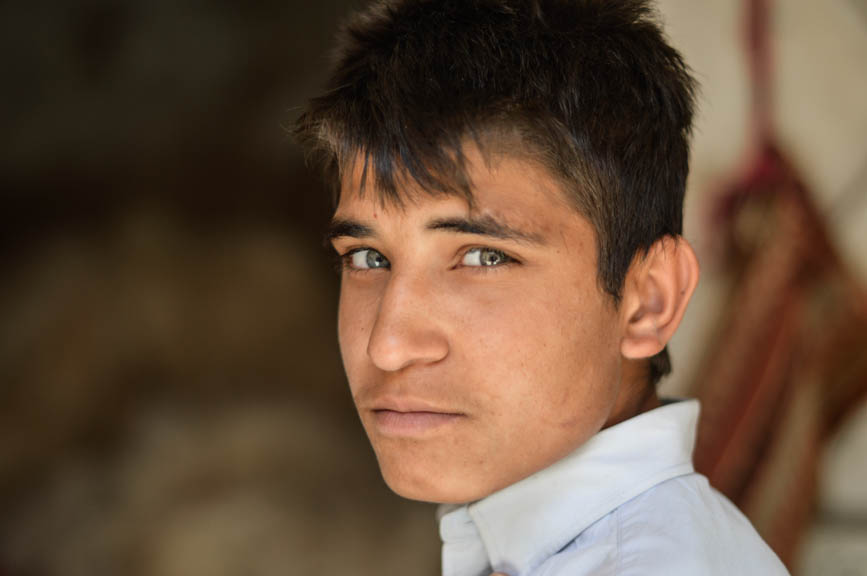
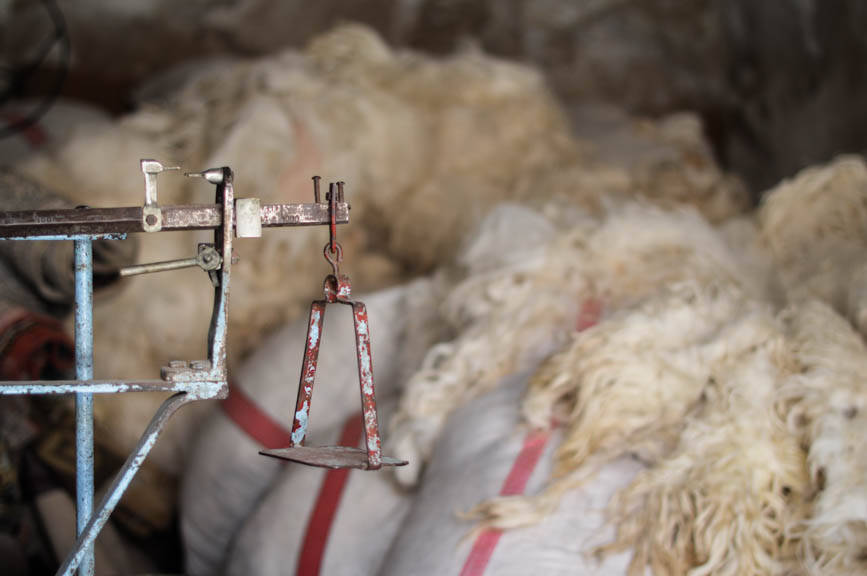
Mardin is a town well-known for its mixed heritage, a town incorporating a Babel, Kheldani and Syrian past with different religions and cultures living together. On our way downhill towards the old bazaar we pass one of the few churches that we have seen in eastern Turkey. While the main street cutting horizontally across the town is filled with tourist shops selling royal blue sugar coated almonds, ice cream cones, local burgundy wine and shiny trinkets, the ancient bazaar built in levels along the side of the mountain is anything but a tourist trap.
We enter through the stony steps and meet Şahin. Şahin with his stunning gaze. The faces as we move east become ever more fascinating, descendants of a truly mixed ancestry. He is only a boy, but he spends his day guarding a sheepskin shop, fluffy and white piles stuffed into red-striped sacks.
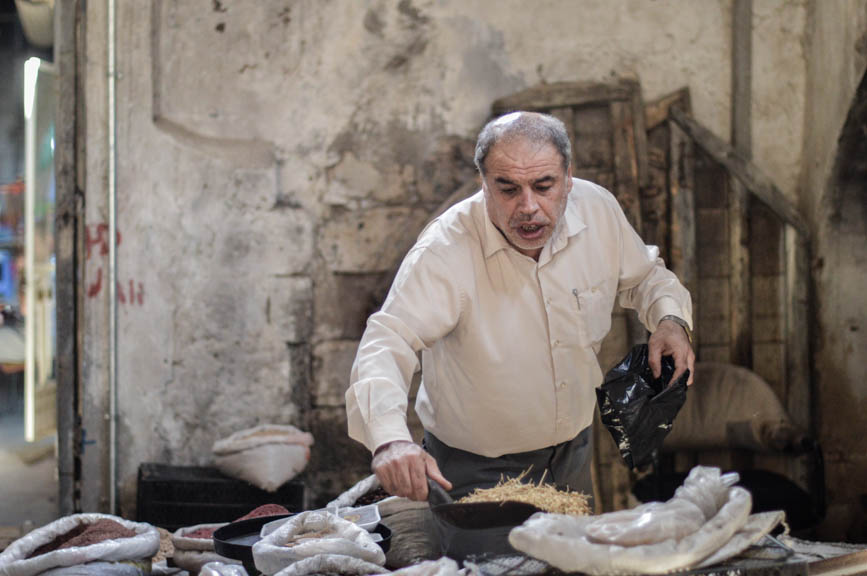
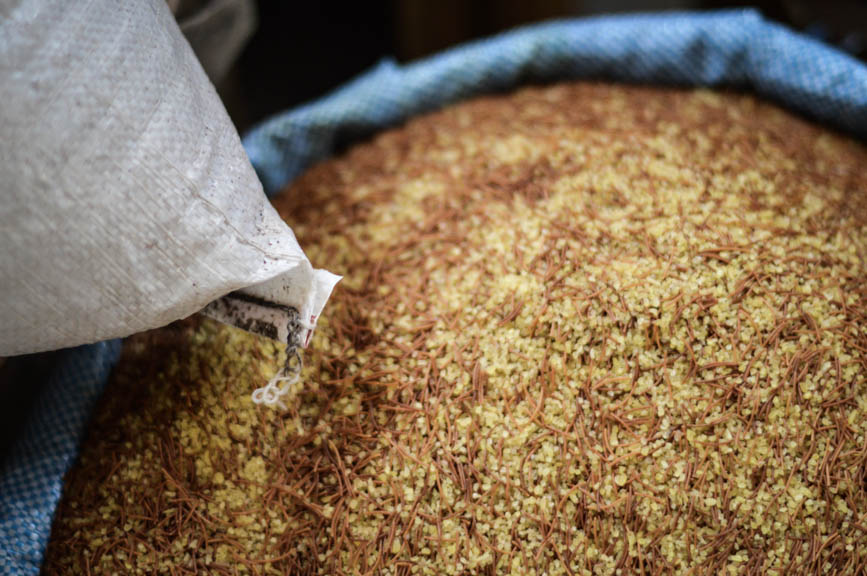
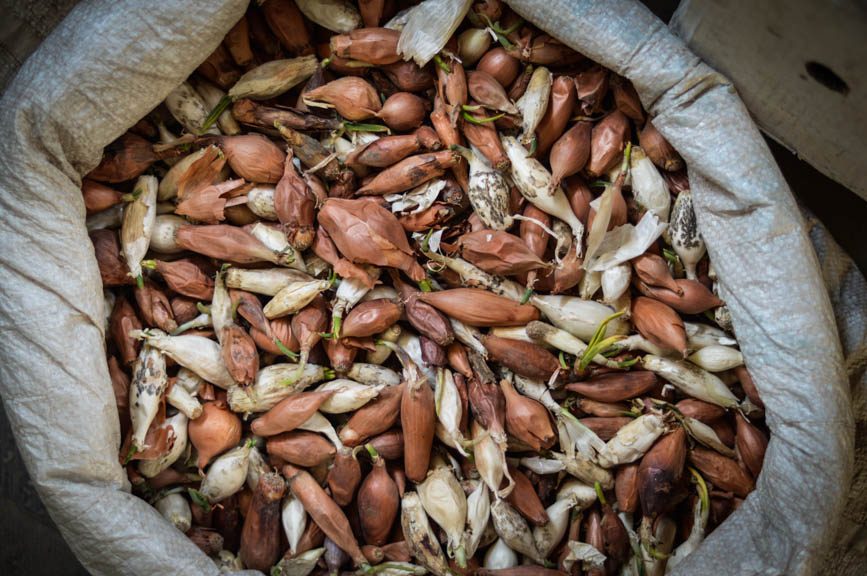
Residents are still walking about doing their daily shopping, navigating the narrow alleyways and dim steps with ease. Most of the bazaar is separated into sections, beginning with fresh fruit and vegetables, followed by pungent spices and dried herbs, perhaps with the intent of preparing you for the raw meat and offal that overwhelms at the next level. I remember visiting the tanneries in Fez, Morocco, where they give you branches of fresh mint to help combat the acute smell of raw leather and hide, you might want to carry a small branch with you to the meat section of Mardin or just take your chances and walk swiftly by. Soon it opens into more tunnels and corners selling desiccated chickpeas, lentils, onions and ready-mixed bulgur wheat with vermicelli, things I would have stocked up on if returning home.
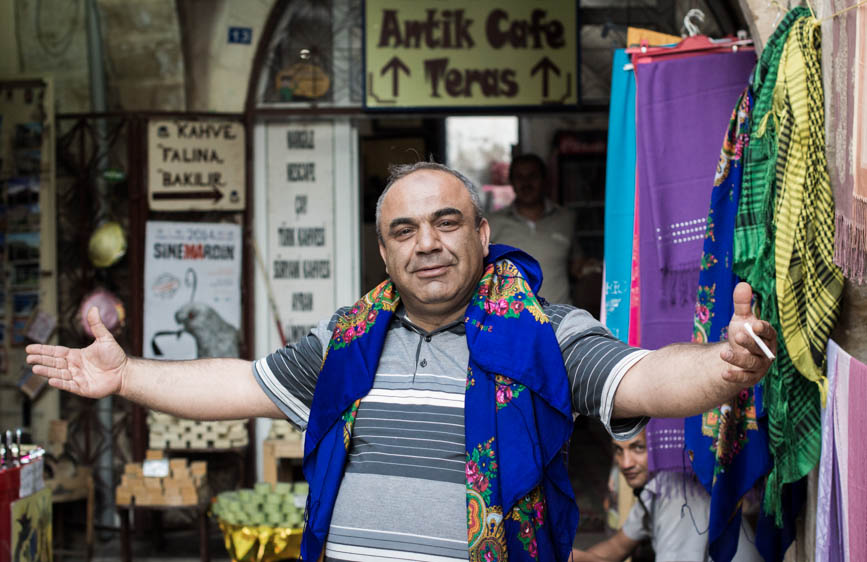
The people of Mardin are just as welcoming, often shouting a booming “Welcome!” with great enthusiasm and immediately following with “Where are you from?”. Sometimes they enjoy playing a guessing game until they hit the right countries then proceed to name the top football player in your nation’s league.
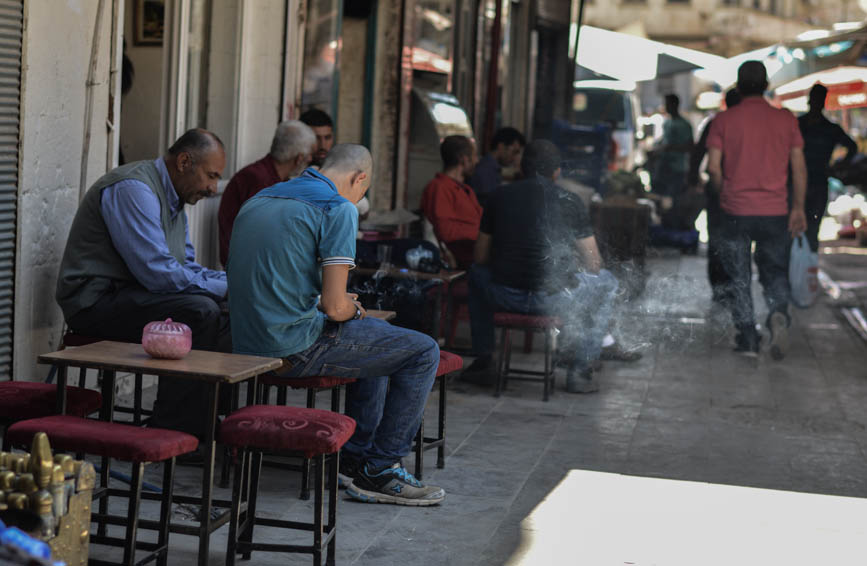
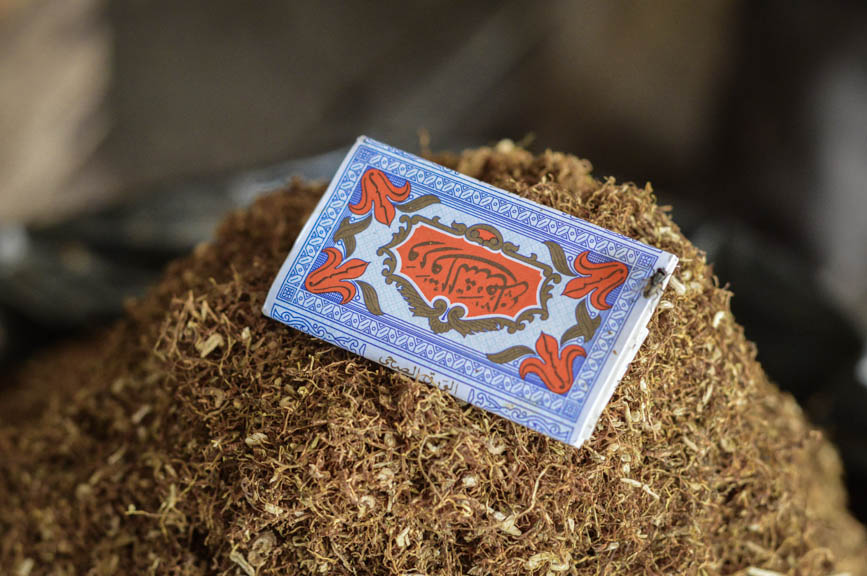
Çay places continue to line the tiled pavements, usually engulfed in a light cloud of cigarette smoke from its customers. This is one of the first places we see loose tobacco in Turkey so far. Most people in Turkey buy pre-packaged cigarettes since they are cheaper, but here you will find gorgeous blue and orange Syrian rolling paper, silky and soft, stacked against piles of scorched tobacco, ready to be sold to you in massive bags.

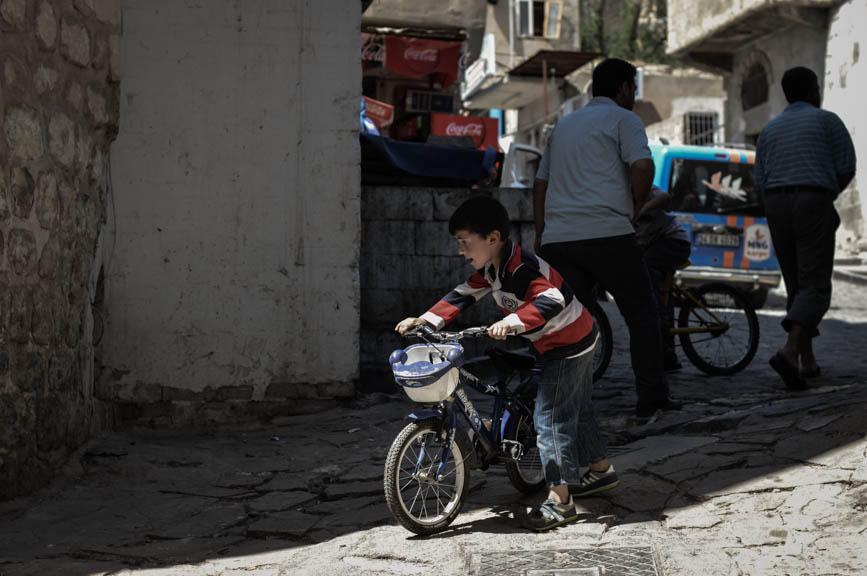
In the quieter back alleys where the shops thin out, children are racing around on bicycles with many of the older kids watching the younger ones. The one main street in Mardin immerses you in chaos and traffic, but once out of the main thoroughfare you are transported to village life.
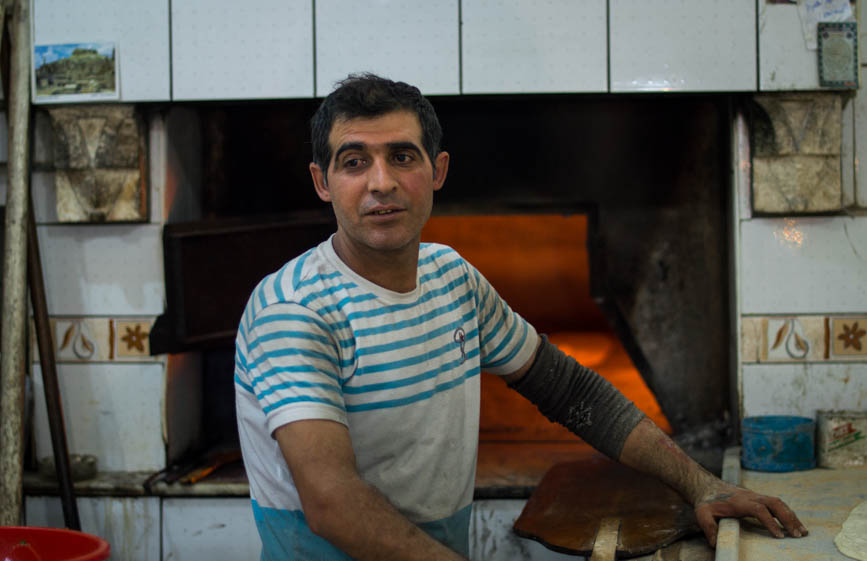
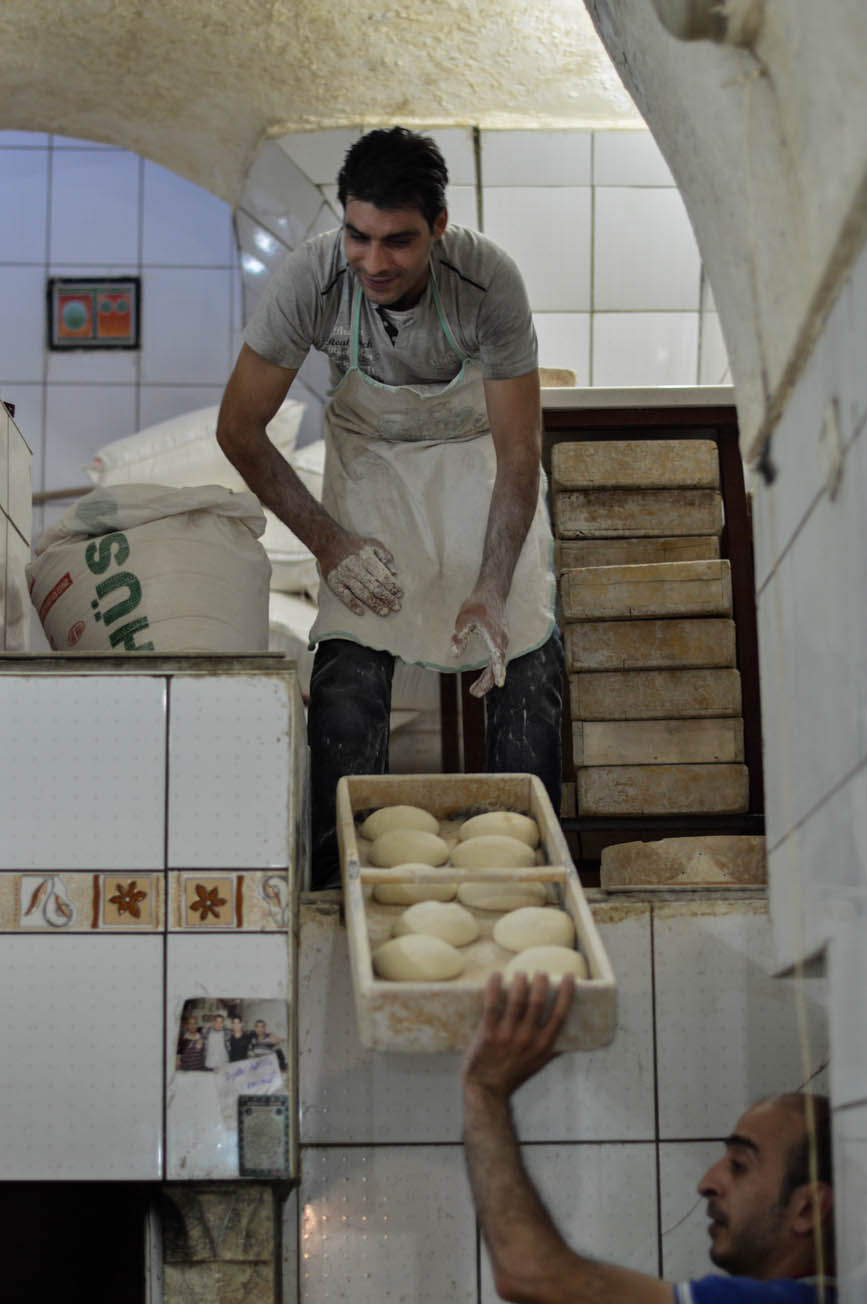
In the heat, we find the best ayran (savoury yoghurt drink) we have had in Turkey so far. Hanging on a rope from the ceiling is a large metal barrel filled with yoghurt, water and ice, rocking it from side to side produces a a perfectly mixed ayran – shaked and served to us like a true barista would.
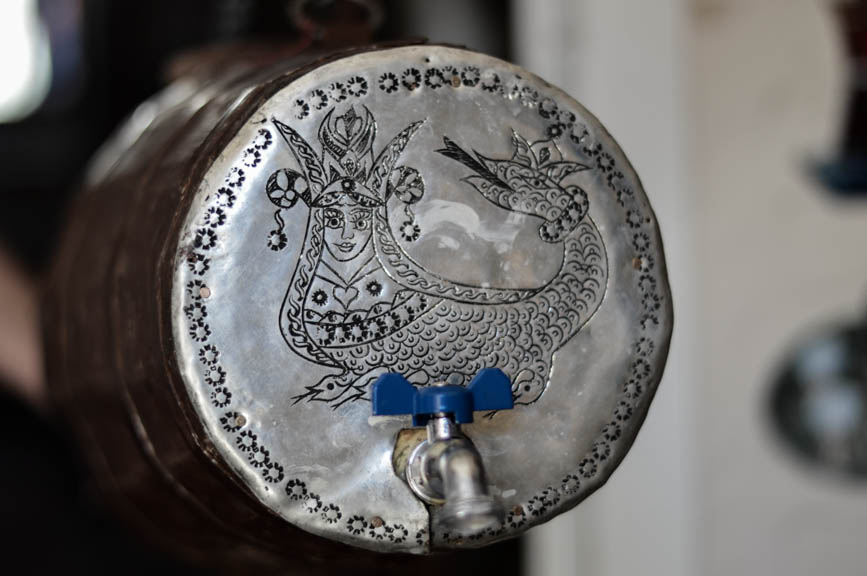
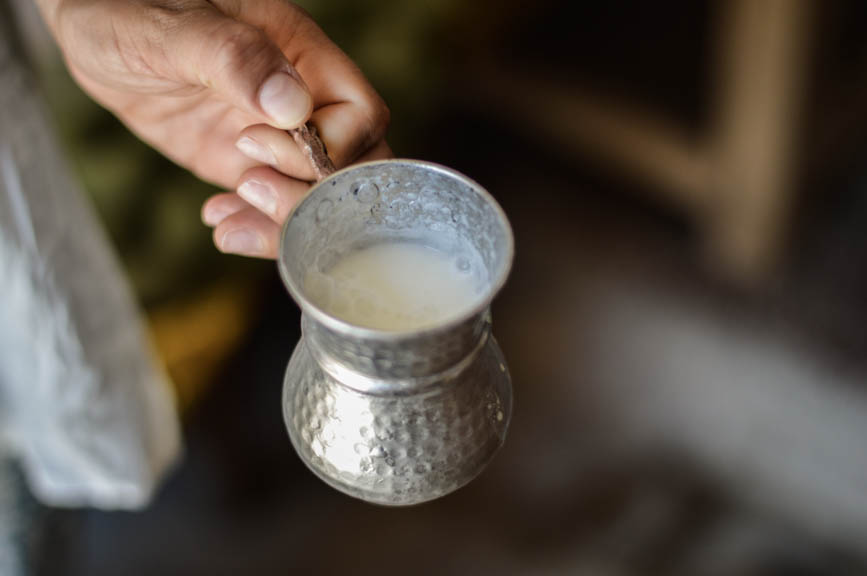
There are many restaurants in Mardin advertising kebabs, pilav, terrace views, all with a hefty price tag attached, but if you want real local food, head to a locantasi. Most of them have their food prepared in trays at the entrance so you can just point and pick. We settled on an eggplant dish which, wait for it, they also call moussaka. To my knowledge until now, moussaka had always been in my popular Greek cuisine folder, I did not expect to find a dish with the same name in Eastern Turkey. Pardon my ignorance, turns out the Greek name mousakás (μουσακάς) actually comes from the Turkish musakka originally inspired by the Arabic root of musaqqa’ah meaning “chilled”. In fact in arabic countries it is often eaten cold, while the version we had in Turkey was sautéed, delicious with piping hot bread. Once again we discover a dish that has travelled from East to West. What makes a dish famous in one place and not another? Greece has definitely won the international recognition prize for moussaka, though based on the one we tasted, Turkey should not sell itself short.
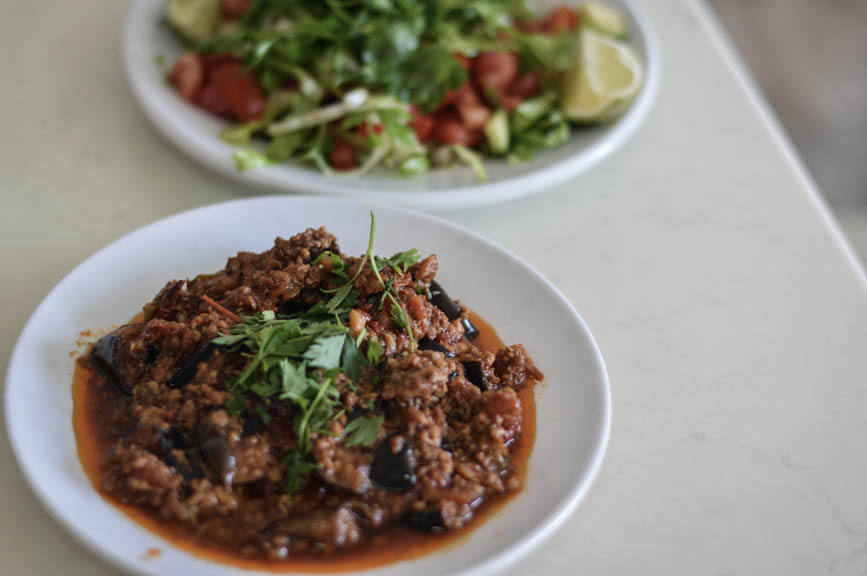
After lunch we continue our discovery of Mardin’s back streets and this romantic sand roasted city seems to be gaining a reputation for wedding tourism as well. We come across a couple posing for photos much like you would find in a western bridal magazine, white dress, white heels, black bow tie, big cigar and all. Other than that we are alone, most tourists choosing to stay by the shops on the main street.
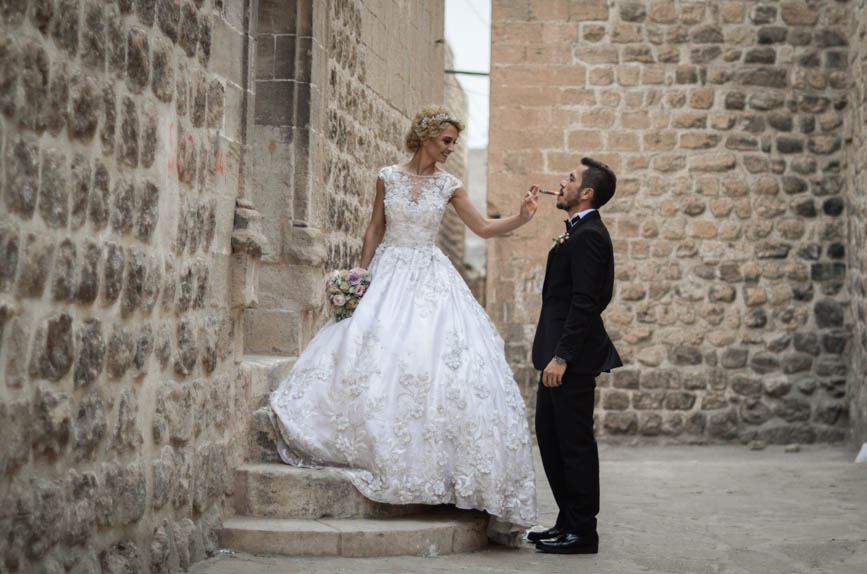
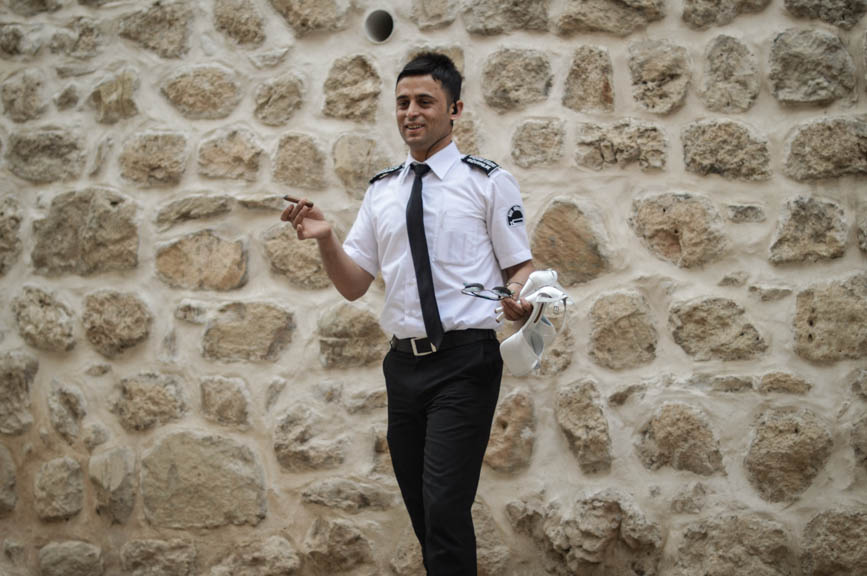
As we look down towards the golden plains of Mesopotamia, the mustard yellow seems to be merging with the pale blue clouds forming a menacing dust ball as a storm approaches. The city is eerily silent, everyone calmly sips on their çays as they watch the wall of sand approach, testing it, seeing who would win at the staring game we were all playing. We are quickly defeated as the rain drops start and the silence is shattered, feet racing to find shelter as the wind kicks up a party on the streets.

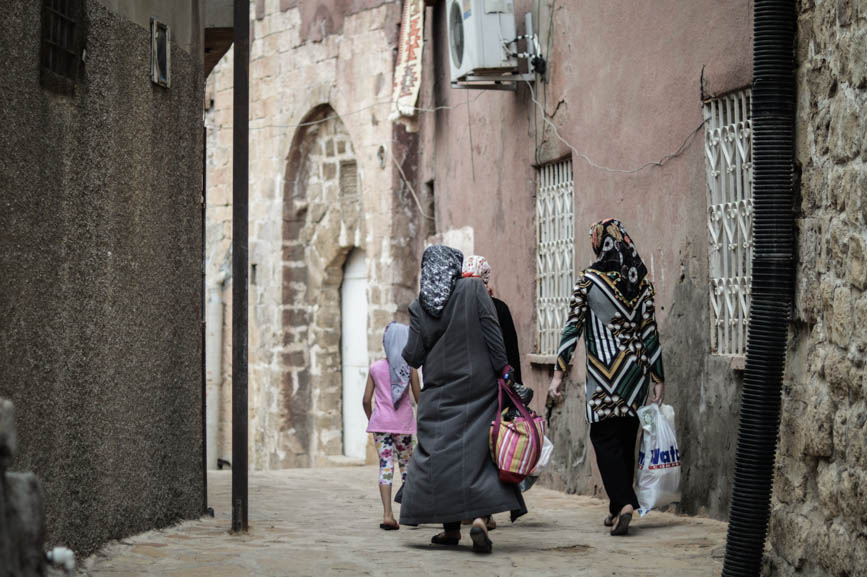
We find refuge immediately in a little pide place and sit down to try the famous “Mardin pizza”, the sembusek. Sembusek is like a mini calzone, a thin layer of dough topped with minced meat, onions, parsley and spices, then folded in half to enclose its filling before being baked in a wood-fired oven. It is almost always served with a side salad and at 1.5 turkish lira (0.50 euros at the time) a pop, it is a fantastic budget snack. We ended up ordering 4 of them as we waited for the storm to pass.
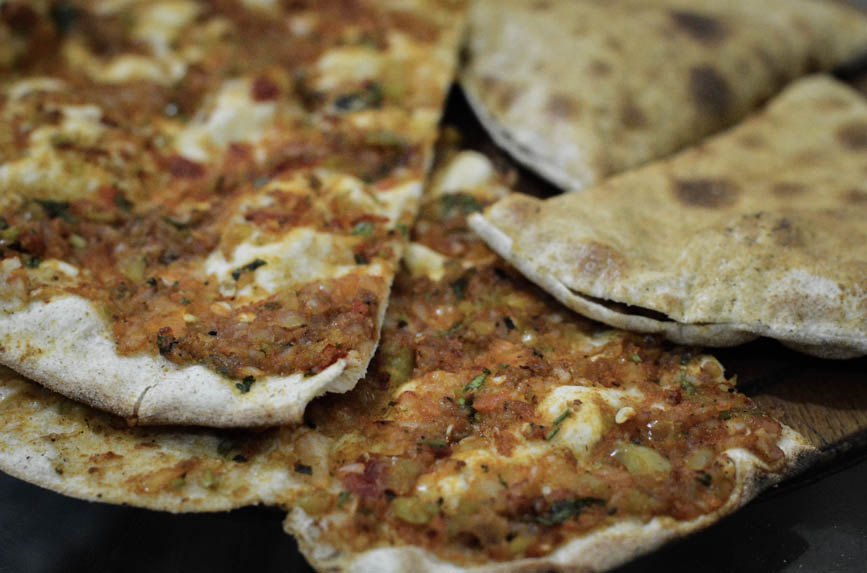
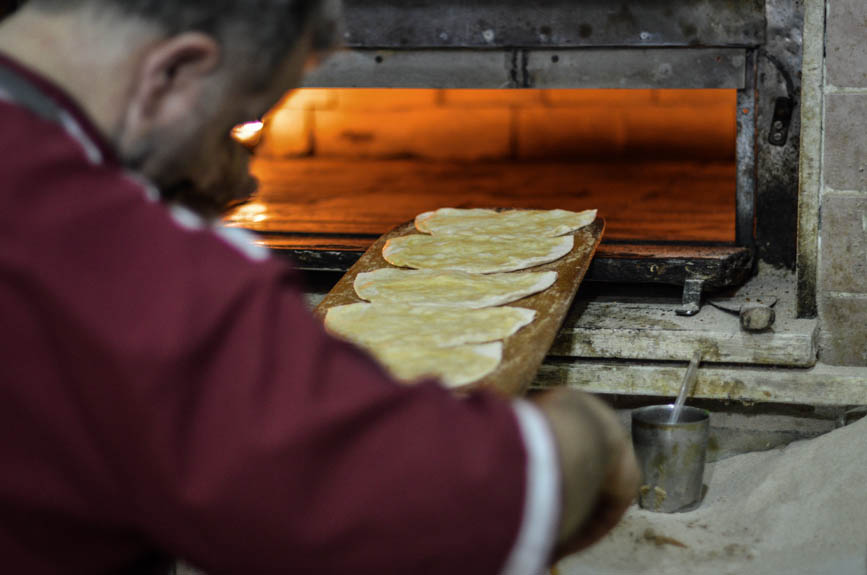
For the best view in Mardin, you can follow the steep steps up towards the back of the town where the Great Mosque of Ulu Camii dominates the city’s landscape. We wait till sunset when the mustard plains turn orange amber then pigeon grey before settling into a deep peacock blue. The minaret of Ulu Camii, built by the Artukid Turks in the 12th century, lights up and emits a hypnotising call for prayer before it watches over its people as the city’s bars and cafes turn up the music inviting passersby to dance the night away.

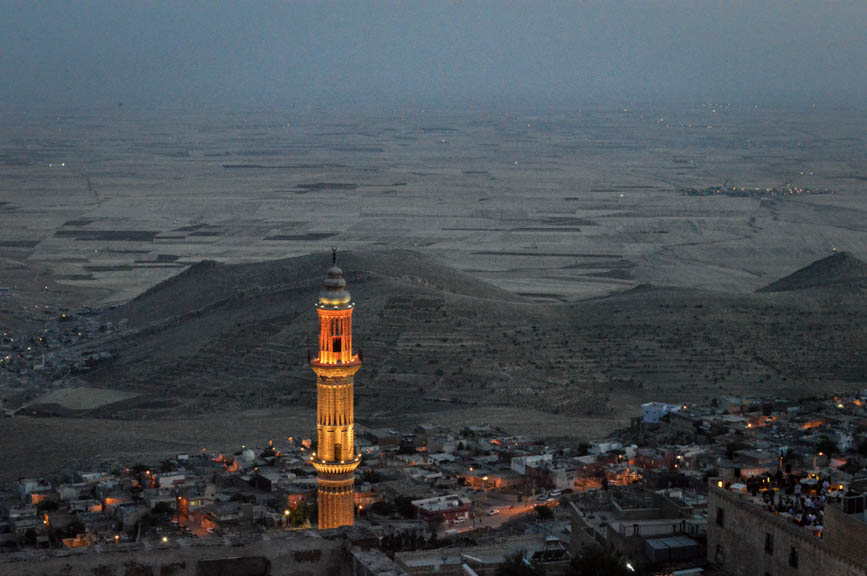
Just before midnight, we head out with our new friend Burak. Burak and us became well acquainted with Google Çeviri (google translate) over the past couple of days. We are entertained with the joys of being lost in translation when he shows us his smartphone screen displaying “I love you misunderstand”. Still trying to figure that one out. Burak is an impressive multi-tasker, university student by day, artist by afternoon and hotel guardian by night. We spend our evenings together, cooking up simple menemen (a turkish dish of tomato sauce and scrambled eggs) and learning some new kurdish words.
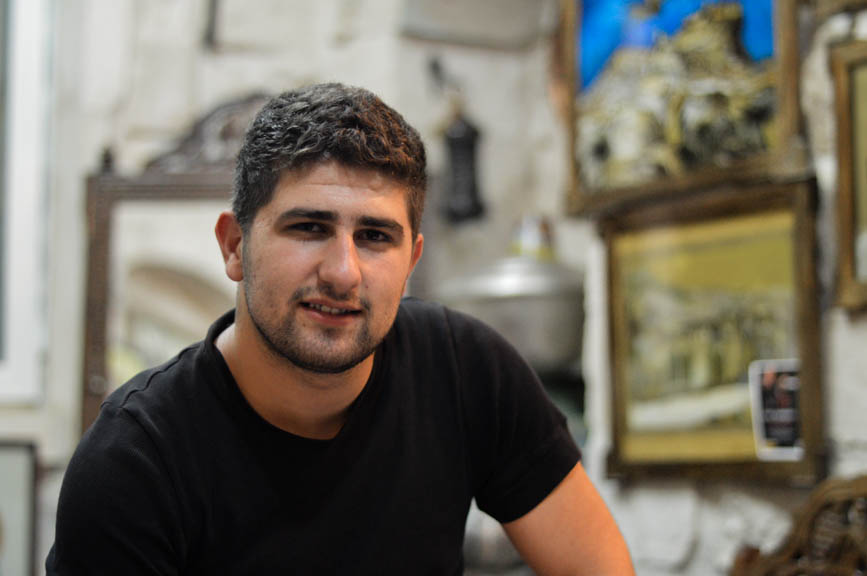
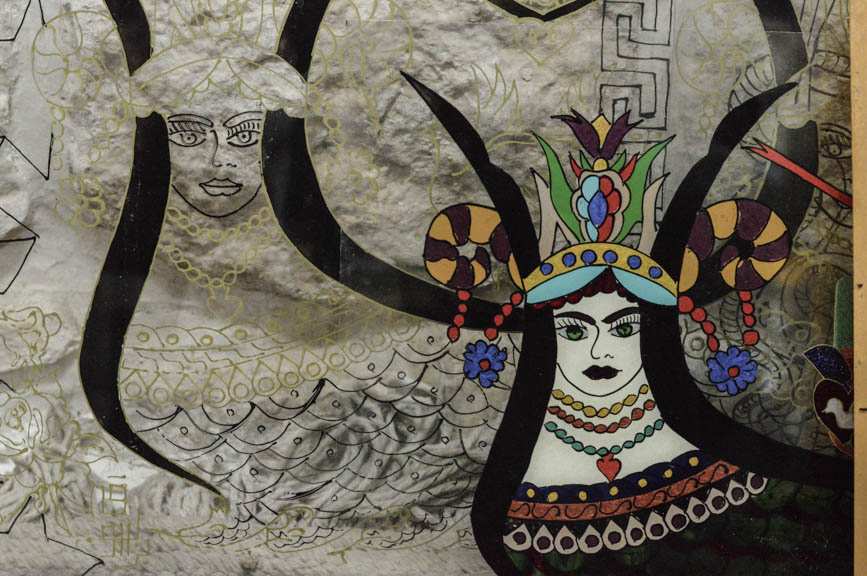
He invites us to his father’s art studio late at night. His father Ebuburak Toparli is a famous artist from Mardin who specialises in artwork representing the mythical mesopotamian creature, the Şahmaran (pronounced Shah-mah-rahn). Şahmaran symbols are found all over Mardin, deriving from the Iranian word for king “Shah” and the Kurdish word for snake “Mar”, this symbol of the Queen of Serpents represents good luck and fertility.
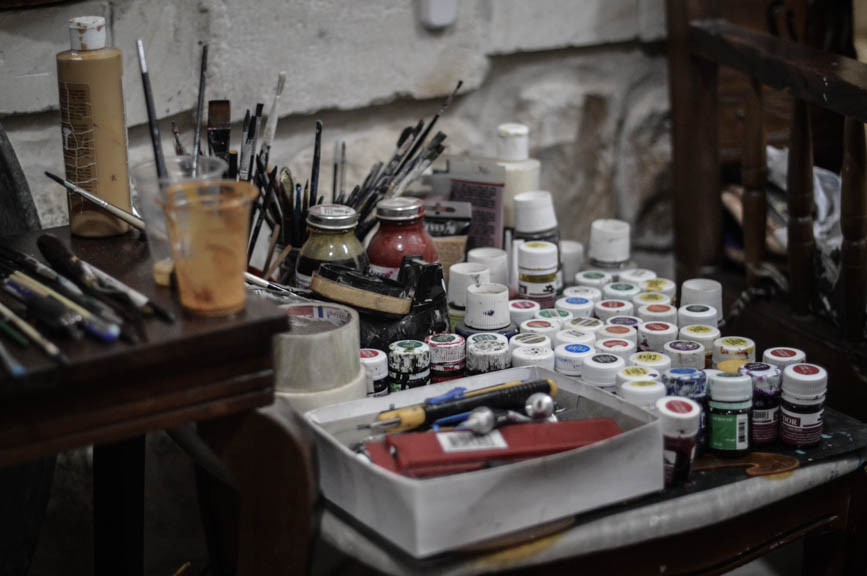

Burak is also training in the art and has produce many beautiful pieces in the studio he shares with his father. We creep in around midnight and Burak’s mom Jena kindly serves us our second dinner of Haley Tavasi – a casserole dish of potatoes, tomatoes and minced meat. It is slightly surreal to be eating in the middle of the night, in a cave-like art studio carved out from Mardin’s limestone rock, surrounded by paints and brushes with turkish music playing in the background. Burak explains to us how they used to get the best quality paint from Syria, but that now due to the war, they mainly order it from Istanbul.
The night quietly slips away as we soak it all in, food, coffee, music and good company hidden away in a secret corner of mystical Mardin.
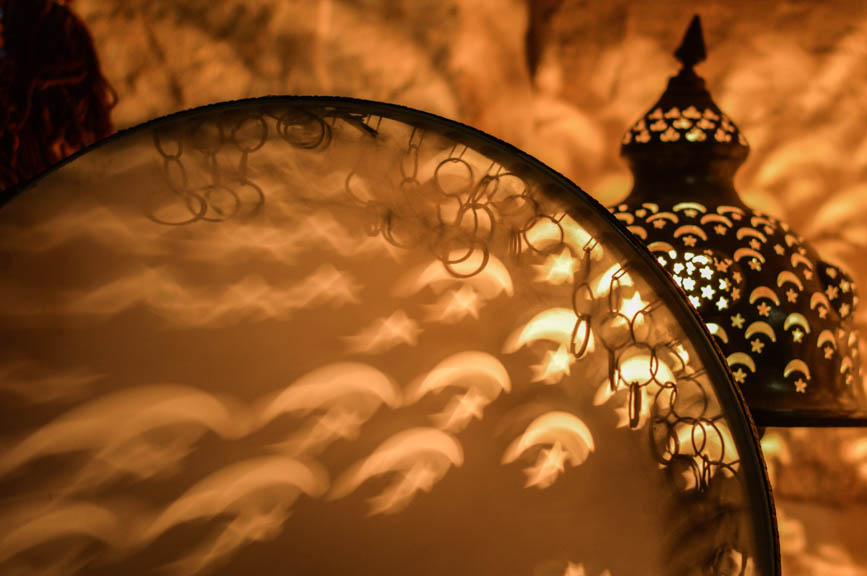
Miscellaneous fact: Mardin is also home to the World’s Tallest Man, standing at 2.51m, Burak’s good friend Sultan Kösen holds the Guinness Book Record since 2009.







1 Comment
tammy
June 21, 2014As always! So interesting to read!
Thank you for sharing!